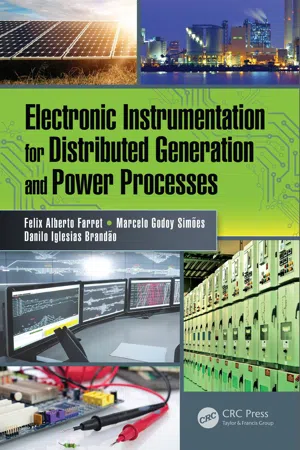
Electronic Instrumentation for Distributed Generation and Power Processes
- 283 pages
- English
- ePUB (mobile friendly)
- Available on iOS & Android
Electronic Instrumentation for Distributed Generation and Power Processes
About This Book
The goal of the book is to provide basic and advanced knowledge of design, analysis, and circuit implementation for electronic instrumentation and clarify how to get the best out of the analog, digital, and computer circuitry design steps. The reader will learn the physical fundamentals guiding the electrical and mechanical devices that allow for a modern automation and control system, which are widely comprised of computers, electronic instrumentation, communication loops, smart grids, and digital circuitry. It includes practical and technical data on electronic instrumentation with respect to efficiency, maximum power, and applications. Additionally, the text discusses fuzzy logic and neural networks and how they can be used in practice for electronic instrumentation of distributed generation, smart grids, and power systems.
Frequently asked questions
Information
1
Computer Interface and Instrumentation Electronics
1.1Introduction
1.1.1Operational Amplifiers
Table of contents
- Cover
- Halftitle Page
- Title Page
- Copyright Page
- Contents
- Foreword
- Preface
- Acknowledgments
- Authors
- Chapter 1 Computer Interface and Instrumentation Electronics
- Chapter 2 Analog-Based Instrumentation Systems
- Chapter 3 Sensors and Transducers
- Chapter 4 Electronic Instruments for Electrical Engineering
- Chapter 5 Signal Simulators and Emulators
- Chapter 6 Advanced Harmonic Analysis for Power Systems
- Chapter 7 Instrumentation and Monitoring for Distributed Generation Systems
- Chapter 8 Fuzzy Logic and Neural Networks for Distributed Generation Instrumentation
- Chapter 9 Instruments for Data Acquisition
- Chapter 10 Software for Electric Power Instrumentation
- Chapter 11 Introduction to Smart Grid Systems
- Index